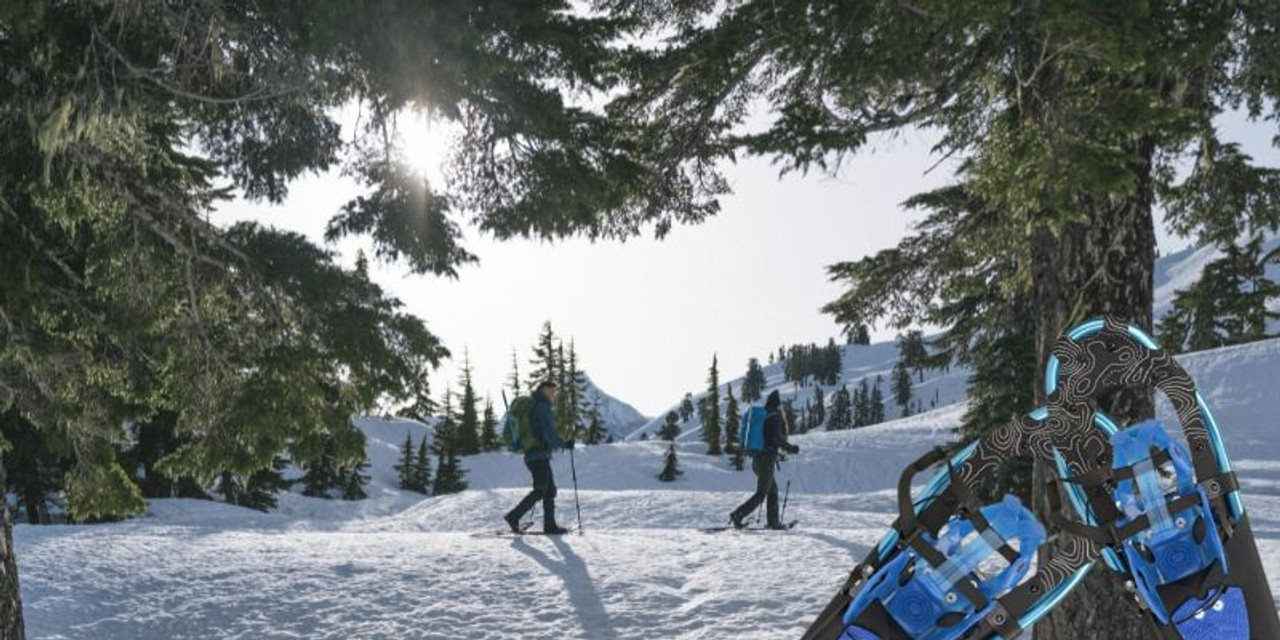5 Snowshoe Preparation Tips
Posted by Crescent Moon on Oct 25th 2023
As winter blankets the landscape in a pristine layer of snow, it's the perfect time to embrace the great outdoors through the serene activity of snowshoeing. Whether you're a beginner or an experienced snowshoer, proper preparation is essential to ensure a safe and enjoyable winter adventure. In this guide, we'll explore five valuable snowshoe tips to help you prepare.
Choose the Right Snowshoe Gear
Selecting the appropriate snowshoe gear is paramount for a successful snowshoeing trip. Ensure you have the following essentials:
- Snowshoes: Choose the right snowshoe size and type for your weight and the terrain you'll encounter. Smaller, more compact snowshoes are suitable for packed trails, while larger ones provide better floatation in deep powder.
- Footwear: Invest in waterproof and insulated boots that provide warmth and protection against moisture. Make sure your boots are compatible with your snowshoes' bindings. Poles: Trekking poles provide stability and balance while snowshoeing. If you choose adjustable trekking poles, you can customize their length to your needs.
- Clothing: Dress in layers to stay warm and dry. Start with moisture-wicking base layers, add insulating layers for warmth, and finish with a waterproof and windproof outer layer. Don't forget warm gloves, a hat, and moisture-wicking socks.
Check Weather and Trail Conditions Before you Snowshoe
- Before embarking on your snowshoe adventure, check the weather forecast for the area you plan to visit. Winter weather can be unpredictable, and being informed about temperature changes, snowfall, and potential storms is crucial.
- Additionally, research the trail conditions and accessibility. Some trails may be closed during the winter, while others might require specific permits. Ensure that your chosen trail is open and safe for snowshoeing.
- If you are on a mountain, bring an avalanche probe. Better to have it and not need it than to wish you had one.
Plan Your Snowshoe Route
Careful route planning is essential to ensure you have an enjoyable and safe snowshoeing experience. Consider the following when planning your route:
- Terrain: Choose trails that match your skill level. Beginners should opt for flat or gently rolling terrain, while experienced snowshoers may seek more challenging routes.
- Distance: Determine the length of your hike based on your fitness level and the time available.
- Trail Difficulty: Research the difficulty of the trail, including elevation changes and potential hazards.
- Trailhead Access: Ensure that you can access the trailhead, especially in remote areas, and consider parking and restroom facilities.
Carry Essential Gear and Supplies:
Packing the right gear and supplies is crucial for safety and comfort during your snowshoeing adventure. Here's a list of essential items to carry:
- Navigation Tools: A topographic map, compass, or GPS device to help you navigate the trail.
- Headlamp: In case your adventure extends into the evening, a headlamp with extra batteries is essential.
- First Aid Kit: A basic first aid kit with supplies for treating minor injuries.
- Food and Water: High-energy snacks, like trail mix and energy bars, as well as enough water to stay hydrated.
- Emergency Gear: An emergency blanket, fire starter, whistle, and multi-tool.
- Communication: A fully charged mobile phone with an emergency contact number stored and protected from the cold.
Learn Basic Snowshoe Techniques:
Familiarize yourself with the basic techniques of snowshoeing to ensure a smoother and more enjoyable experience:
- Walking: Practice walking in snowshoes on flat terrain to get used to the movement.
- Turning: Learn how to make controlled turns by lifting one foot slightly while keeping the other on the ground.
- Ascending: Use a kicking technique to ascend hills, lifting your toes slightly with each step.
- Descending: When descending slopes, lean back slightly and make a gliding motion to control your speed.
Snowshoeing is a rewarding winter activity that allows you to connect with nature while enjoying the serene beauty of snowy landscapes. By following these five tips for preparation, you'll be well-equipped and informed to embark on a safe and enjoyable snowshoeing adventure. Remember to stay informed about weather and trail conditions, pack essential gear, and familiarize yourself with snowshoeing techniques. With the right preparation, you can make the most of the winter wonderland on your next snowshoeing expedition.
Check out our Foam Snowshoes, Aluminum Snowshoes, and Snowshoe Accessories.
Foam Snowshoes – Aluminum Snowshoes – Snowshoe accessories
Check out all of our foam snowshoes, aluminum snowshoes and snowshoe accessories. Foam Snowshoes - Aluminum Snowshoes - Snowshoe accessories

